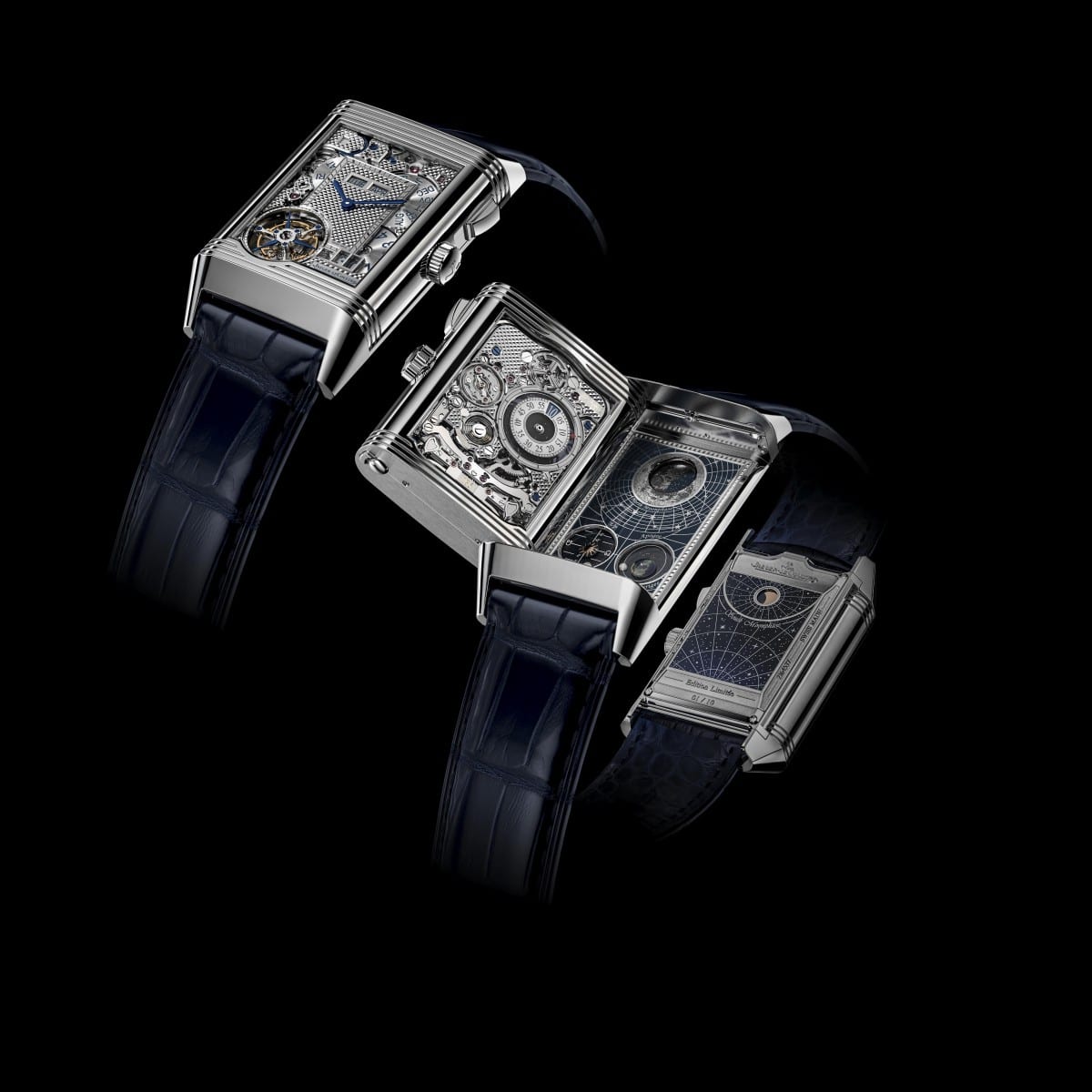CHAPTER THREE: UNCOVER THE ORBIT
Before the formal development of time reckoning systems, primitive societies observed celestial phenomena and created powerful myths and stories around the dance of the heavenly orbs above. The earliest astronomers were also mathematicians, and instruments constructed on their formulations were able to mechanically compute the positions of various celestial objects. The interaction between the various orbits of the Sun, Earth and Moon determine the rhythms of life, and watchmaking first evolved as a means to bring order to the world around us. As a watch manufacture with close to two centuries of fine watchmaking expertise, Jaeger-LeCoultre has mastered all aspects of time expression, from the quotidian to the esoteric. One of the hallmark complications of Jaeger-LeCoultre is the display of sidereal time, time that is determined with reference to the stars instead of the Sun, first presented in the Master Grande Tradition Grande Complication (2010).
This year, for the first time ever in the history of mechanical horology, Jaeger-LeCoultre unites three displays of lunar information — the synodic cycle, the draconic cycle and the anomalistic cycle — in a single wristwatch. This unique micromechanical combination of indications, located on the interior face of the cradle of the Reverso Hybris Mechanica Calibre 185, allows the determination of eclipse events (both solar and lunar) and rare lunar phenomena such as supermoons.
Occupying the top half of the interior face of the cradle of the Reverso Quadriptyque is a massive representation of the phases of the moon in the Northern Hemisphere. A laser-engraved moon is progressively covered and revealed by a mobile blue lacquer disc with gold glitter décor, corresponding to the age of the moon in the synodic cycle. While conventional displays of the moon phase accumulate one day of error after 32.5 months, the moon phase display of the Quadriptyque requires only one adjustment after 1,111 years.
Just below the moon phase display, on the left, is a counter with a three-dimensional micro-sculpted pink-gold sun orbited by a tiny hemispherical moon. This counter shows the draconic cycle, showing when the path of the Moon intersects with the orbit of the Earth around the Sun (known as the ecliptic). Such an intersection takes place twice in each cycle, indicated by the horizontal alignment on the counter of the moon and the sun. At this time, the Moon, Earth and Sun are all on the same plane; however, they may not be aligned. For them to be aligned, a phenomenon known as syzygy, an additional condition must be fulfilled — the Moon must be either in its new or full phase. When that happens, an eclipse event happens on Earth, either a lunar eclipse if the Moon is in its full phase, or a solar eclipse if the Moon is in its new phase. However, the actual visibility of the eclipse is dependent on various factors such as the geographical position of the viewer.
To the right of the draconic cycle counter is a domed representation of the Earth, micro-painted in enamel, with a hemispherical moon in eccentric orbit around it. This counter represents the anomalistic cycle, showing the varying distance between the Earth and Moon. At its apogee, the Moon is at its furthest distance from the Earth and is closest at its perigee. When the Moon is in its full phase near or at the perigee, an event known as a supermoon occurs, in which the Moon can appear to be up to 14 percent larger than usual in the sky.
The display of the synodic, draconic and anomalistic cycle together in a wristwatch is unprecedented in horology, with the latter two indications protected by patent, making the Reverso Hybris Mechanica Calibre 185 the only watch ever made to provide such depth of information about astronomical phenomena.
The Hybris Mechanica family of timepieces at Jaeger-LeCoultre began with the 2003 Atmos Mystérieuse and has since grown to encompass close to 20 groundbreaking horological creations, including the Master Hybris Mechanica Gyrotourbillon 1 (2004), the Reverso Hybris Mechanica Grande Complication à Triptyque (2006), the Master Ultra Thin Minute Repeater Flying Tourbillon (2014) and the Master Grande Tradition Gyrotourbillon Westminster Perpétuel (2019). The word Hybris originates from the Greek “hubris” that refers to the soaring ambition exhibited by the legendary heroes of antiquity. It is a promise made by Jaeger-LeCoultre to continually expand the horizons of watchmaking; a promise that has been dutifully kept for 18 years.














